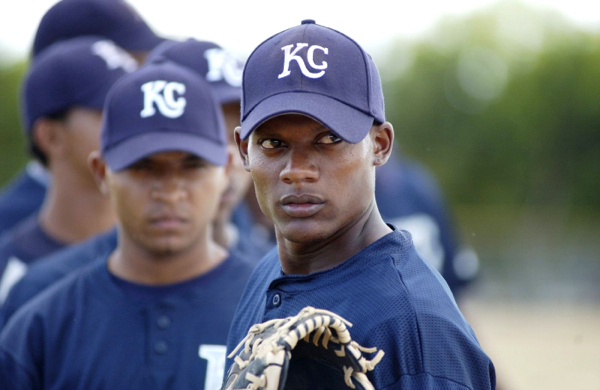Movie review by Greg Carlson
Anna Boden and Ryan Fleck’s follow-up to their excellent “Half Nelson” is called “Sugar,” and like their previous feature, the movie is a sharp-eyed examination of character and human nature that digs much deeper than the minor league baseball premise would suggest. Following the blossoming but shaky prospects of hopeful Dominican Republic pitcher Miguel “Sugar” Santos (Algenis Perez Soto), the movie travels from the D.R. to the United States, with stops in Arizona, Iowa, and finally the Bronx, where the story’s stirring conclusion is set.
“Half Nelson” flirted with the dangers inherent in movies about teachers and students, but transcended the clichés of the genre by focusing on the most telling details in the lives of its central characters. “Sugar” wisely adopts the same template, even though the movie’s many baseball scenes are handled with a strong sense of no-nonsense realism. Ultimately, “Sugar” functions effectively as a meditation on the ways in which the American Dream can fail those from poor countries who make their way to the United States. The film is even more effective as a slice of life that examines one individual seduced by a system in which the odds of winning are nearly as daunting and farfetched as the Powerball.
Boden and Fleck, who share writing and directorial credit on the movie, make the most of a modest budget and “Sugar” capitalizes on each of its sharply defined locations. Sugar’s sojourn in Bridgetown, Iowa, where he boards with an elderly couple, registers deeply, and the directors mostly avoid turning the rural baseball fans into Midwestern farm caricatures. In Iowa, Sugar’s inability to speak English isolates him just as much as his ethnicity, and the moviemakers construct several vivid vignettes – ranging from the comic motif that shows the non-English speaking ballplayers repeatedly ordering French toast at the diner to the wordless display of racism that erupts on the dance floor of a crowded bar – that bring Sugar’s experiences to life.
Because the movie is filtered through Sugar’s point of view, the audience does not get to know many of the supporting characters beyond the surface interactions they share with the protagonist. One minor subplot, involving Sugar’s attraction to his Iowa host family’s granddaughter, might have turned into a major detour in the story, but Boden and Fleck maintain a level of restraint that will leave many viewers hoping for something more. The final section of the movie, in which Sugar forges a friendship with a fellow Spanish speaker, offers no earth-shattering epiphany, but the very last shots of the film have a way of staying with you long after the film ends.
“Sugar” might be described by some as a sorrowful movie, but unlike traditional sports films, the highest peaks and the lowest valleys are left alone so that the moviemakers can plot a tale of the middle ground that applies to scores of wannabes from all kinds of places, including the United States, who dream of major league glory but settle for some professional playing time instead. A substantial portion of Sugar’s modest paycheck is always wired home to his mother in the Dominican Republic, and the young man’s loneliness is described so palpably that casual baseball fans might think twice next time they see the almost anonymous names stitched on the backs of minor league jerseys.
